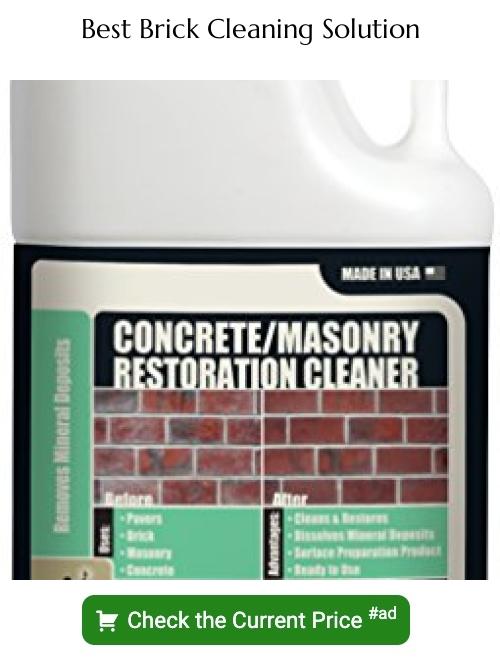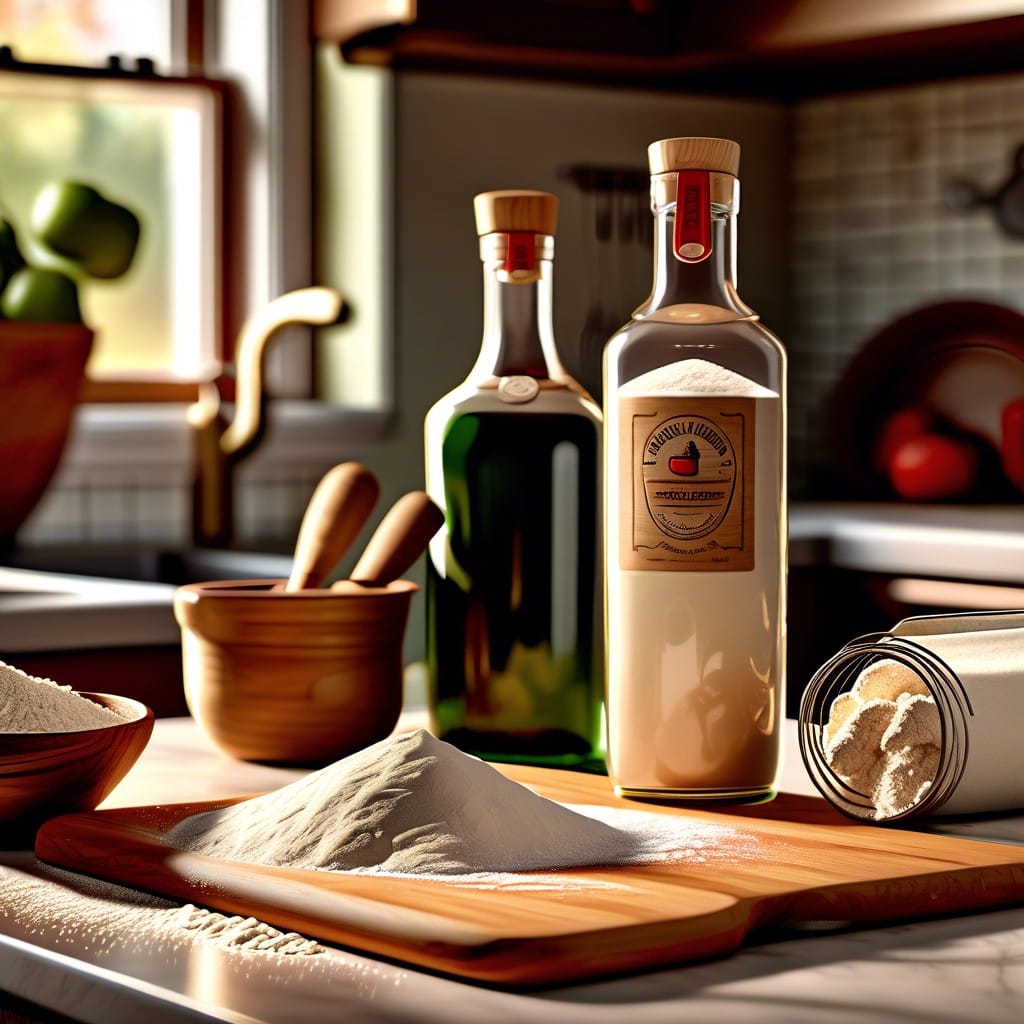Last updated on
Brick surfaces can transform from drab to fab when decorated with chalk; however, the removal process might be challenging because brick is porous and tends to hold onto the chalk particles even after vigorous scrubbing.
Removing chalk from brick can be an unnerving task, especially if you’re unsure of the right methods. However, with some focused steps, the task becomes significantly easier. This quick guide will cover fool-proof techniques to remove chalk from brick surfaces without damaging them.
Dive in to uncover comprehensive steps, from using simple household items to commercial cleaning solutions, to restore the original aesthetic appeal of your brick surfaces.
Key takeaways:
- Rinse the chalky surface with water before cleaning.
- Create a chalk-removing solution with dish soap and water.
- Scrub the brick surface with a stiff-bristle brush.
- Rinse the brick with water and allow it to air dry.
- Use heat, wiping, and a brick cleaner to remove crayon marks.
Equipment/Materials Needed to Remove Chalk From Brick
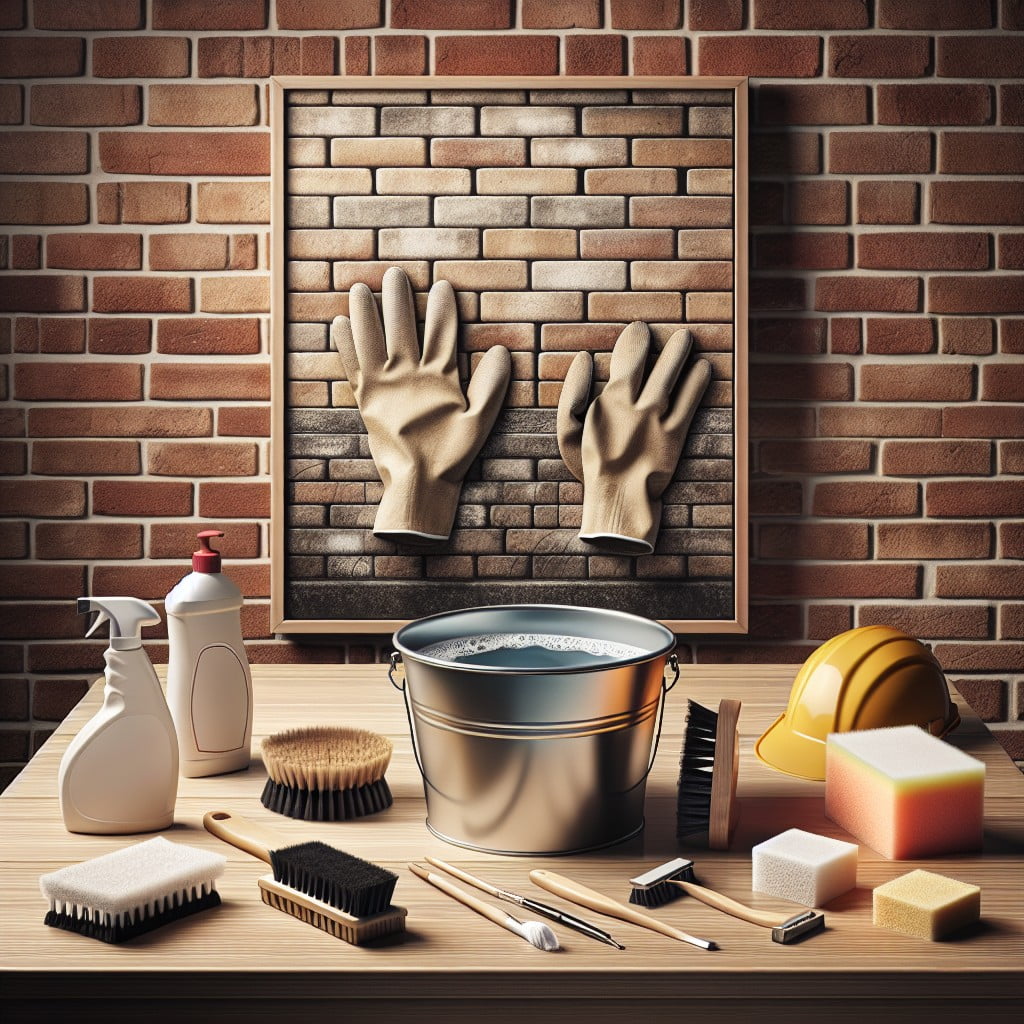
Before getting started, gather the following: a stiff-bristled scrub brush, bucket, warm water, and a variety of detergents for different types of chalk. For regular sidewalk chalk, a simple dishwashing liquid will do the trick. If dealing with limescale or salt blow-out stains, a specialized brick cleaner is needed. To remove crayon marks, a mildly abrasive cleaner like baking soda is recommended. Also, consider an appropriate protective gear including gloves and goggles to keep your eyes and hands safe throughout the process. Lastly, ensure to have a hose pipe or a large amount of water for rinsing.
Steps to Remove Chalk From Brick
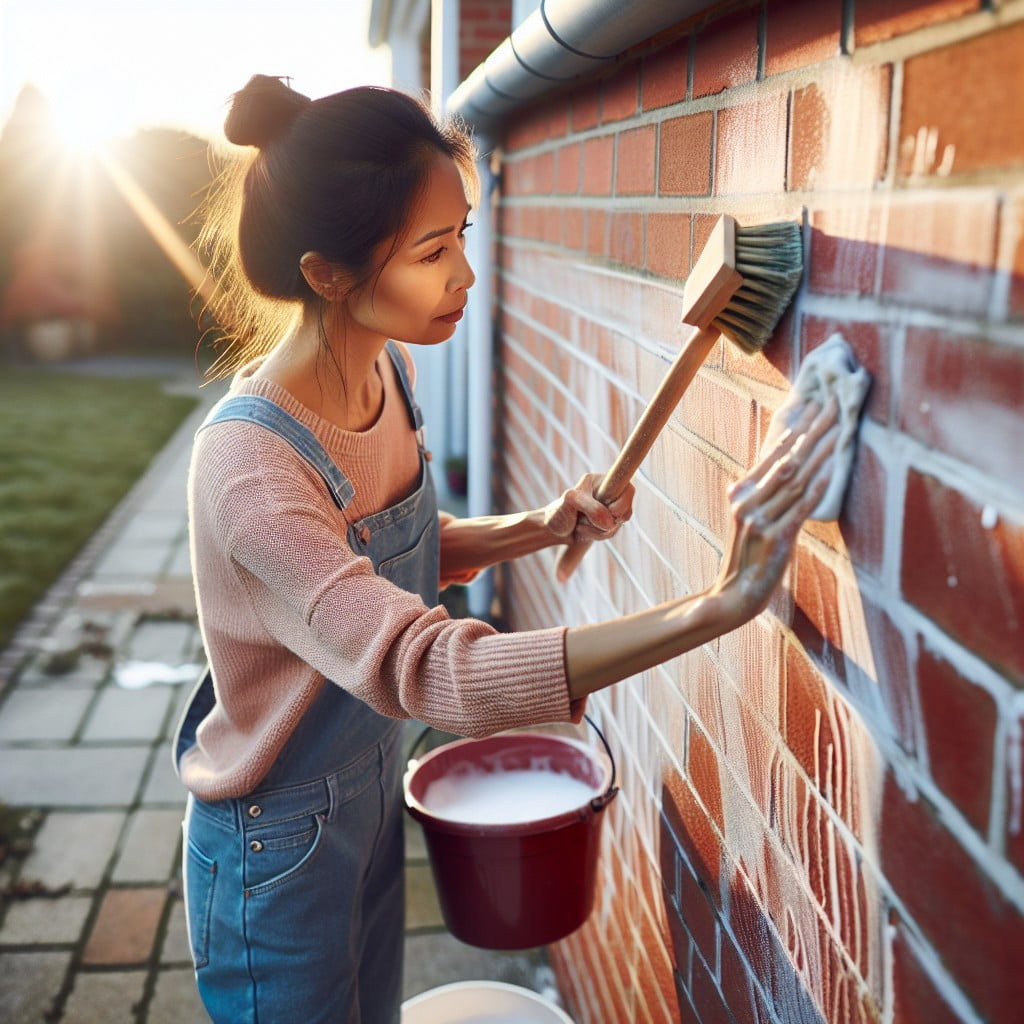
Kickstart this rejuvenation process with a thorough rinsing of the chalky surface using just water. Focus the water pressure on the most prominently affected spots.
Secondly, prepare a chalk-removing solution for stubborn stains. This will typically involve a mixture of mild dish soap and water in a bucket. Alternative options can be a vinegar solution with a ratio of half vinegar, half water or a commercial brick-cleaning product.
With the assistance of a stiff bristle brush, scrub the brick using your prepared solution. Work from top to bottom to avoid streaking and applying a drop cloth can help catch any falling debris.
Repeat the steps as necessary, then finalize with another rinse using your hose. Aim to remove any residual soap left on the brick. Finally, allow the brick to air-dry naturally.
How to Remove Sidewalk Chalk From Paving Stones

To kick off the process, gather all necessary tools needed: a stiff-bristle brush, power washer (if available), dish soap, and lukewarm water. Initially, use the stiff-bristle brush to lightly scrub away loose chalk pieces. This provides a clean base where the soap can effectively isolate the remaining pigments.
Once you’ve brushed off the loose layers, proceed to make a simple cleaning solution by mixing standard dish soap with lukewarm water. Coat the stained area thoroughly with this soap mixture. Allow it to sit for a while, giving the soap time to break down the chalk.
After letting it sit, it’s time for more scrubbing. Brush the soap-coated area with firm force, disrupting the chalk particles and making them easier to wash away. If a power washer is within reach, this step can be made even easier. Aim the washer at the soaped area and let the high-pressure water do the thorough scrubbing.
This technique applies to most paving stones. However, some materials may have specific care instructions. Always make sure to cross-check the manufacturers’ recommendations to prevent inadvertently damaging your paving stones while attempting to clean them.
Step-by-Step Guide for the Removal of Limescale/Salt Blowout From Brick
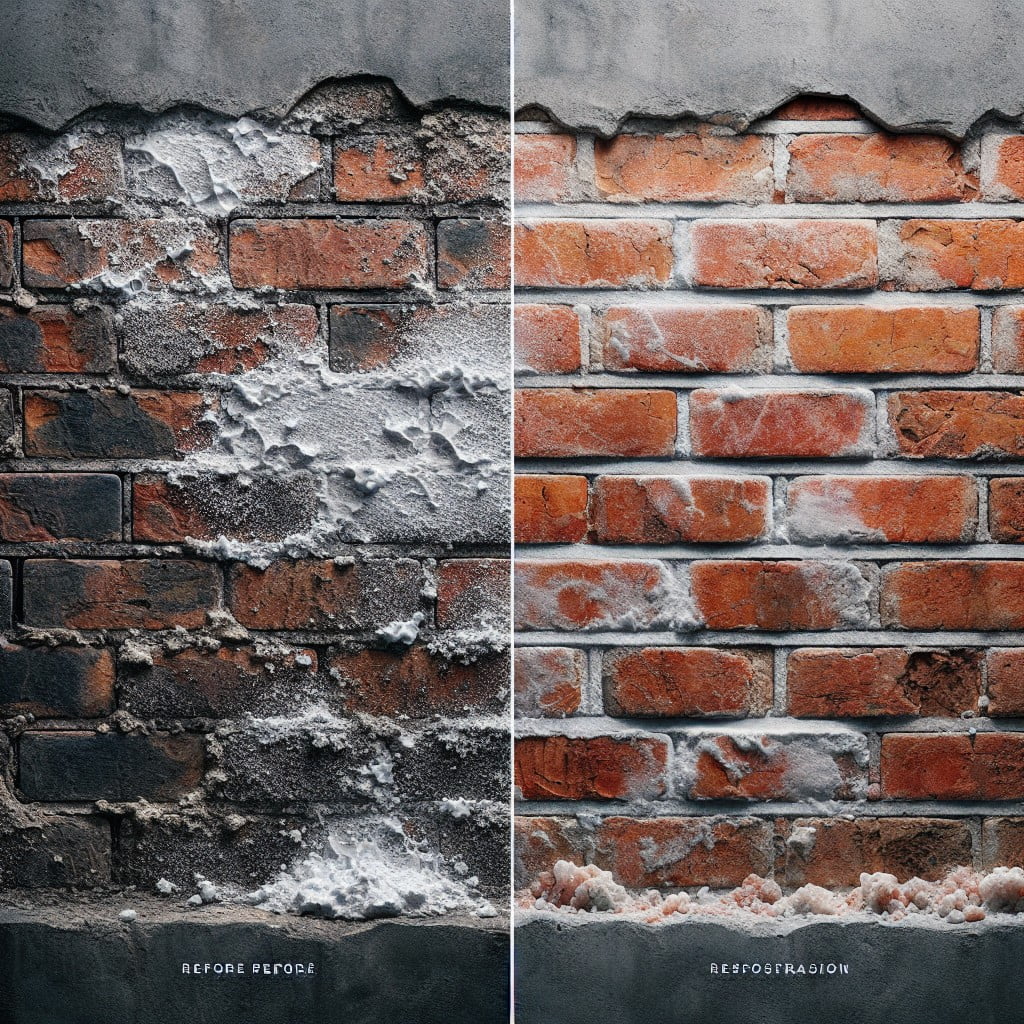
First, soak the area in white vinegar and let it sit for an hour or so. Following this, scrub the treated area with a stiff bristle brush. Vinegar is highly acidic and it effectively dissolves limescale and any salt deposits.
For stubborn areas, consider using a commercially prepared solution specifically formulated for the removal of mineral deposits and limescale. Make sure to follow the manufacturer’s instructions closely to avoid damaging the brick.
Going forward, prevention is the key. Regularly clean the brick surface to stop buildup before it’s visible. Use a low-pressure garden hose to rinse off your brick; high pressure can harm the material.
Monitor your brickwork. Significant salt deposition may indicate moisture issues. Consult a professional if this is the case. These measures not only keep your brick looking sharp, but also prolong its lifespan.
How to Remove Crayon From Brick
Armed with the right tools and techniques, eliminating stubborn crayon marks from brick surfaces becomes a plausible task. The key lies in the timely execution of these steps:
1. Applying Heat: Use a blow dryer to warm the crayon marks. Keep the dryer’s nozzle at least a few inches away so you don’t damage the brick. The heat melts the wax, making it easier to wipe away.
2. Wiping With a Cloth: Next, using a cloth dampened with soapy water, wipe the now softened crayon marks. It’s important to remember that a gentle but firm touch is needed to prevent unnecessary damage to the brick surface.
3. Using a Brick Cleaner: If soap and water are not enough, you can use a brick cleaner. Apply as directed by the manufacturer, follow safety instructions, and always do a small test area first.
4. Scrubbing with a Brush: For those particularly tenacious marks, using a small scrubbing brush can provide enough abrasive force to fully remove the crayon.
Remember, if the crayon stains are still stubborn, you may need to repeat the process. Always maintain patience and perseverance throughout this process.
Additional Tips and Advice for Chalk Removal From Brick
1. Protect nearby surfaces before you begin the cleaning process. Cover them with a tarp or thick cloth to prevent potential staining.
2. Always start from the bottom and work your way up when cleaning a wall. This prevents dirty water from streaking down your clean surface.
3. Be gentle when cleaning. Bricks can be damaged if scrubbed too hard or if a strong cleaning agent is used.
4. Always test a new cleaning solution on an inconspicuous area of the brick to check for any adverse reactions.
5. Give the cleaned area ample time to dry. Moisture trapped in brick can lead to mold growth or further staining.
6. Don’t rush the process. Deeply embedded chalk may require more than one cleaning to be completely removed. Be patient and persistent.
7. If basic cleaning methods aren’t effective, consider hiring a professional. They have the necessary equipment and expertise to safely and quickly restore your brick surface.
FAQ
How does chalk come off concrete?
Chalk can be effectively removed from concrete by either scrubbing the area with a mild, abrasive cleanser like Soft Scrub or applying a homemade paste made of baking soda and water.
How do you get sidewalk chalk off the wall?
To remove sidewalk chalk from a wall, start by brushing and rinsing off as much of the chalk as possible, then use a product like Soft Scrub alongside a damp sponge or soft cloth, employing a circular motion, and finish by rinsing with water.
Does chalk come off concrete easily?
Chalk typically washes off concrete with ease, particularly when the surface is over two years old, often disappearing after the first rainfall.
Does all chalk wash off concrete?
While children’s chalk, made from washable materials, can be easily washed off concrete, regular house and school chalk, derived directly from natural sources, may be somewhat more challenging to remove.
Can commercial cleaners successfully remove chalk from brick surfaces?
Yes, commercial cleaners can effectively remove chalk from brick surfaces.
What are the most effective home remedies for chalk removal on concrete?
The most effective home remedies for chalk removal on concrete include using a pressure washer, applying a solution of vinegar and warm water, or applying a commercial concrete cleaner.
Is there a difference in chalk removal methods for colored concrete versus standard concrete?
Yes, the chalk removal method for colored concrete is subtly different from standard concrete as it often requires a mildly acidic solution to preserve the color.
Recap:
